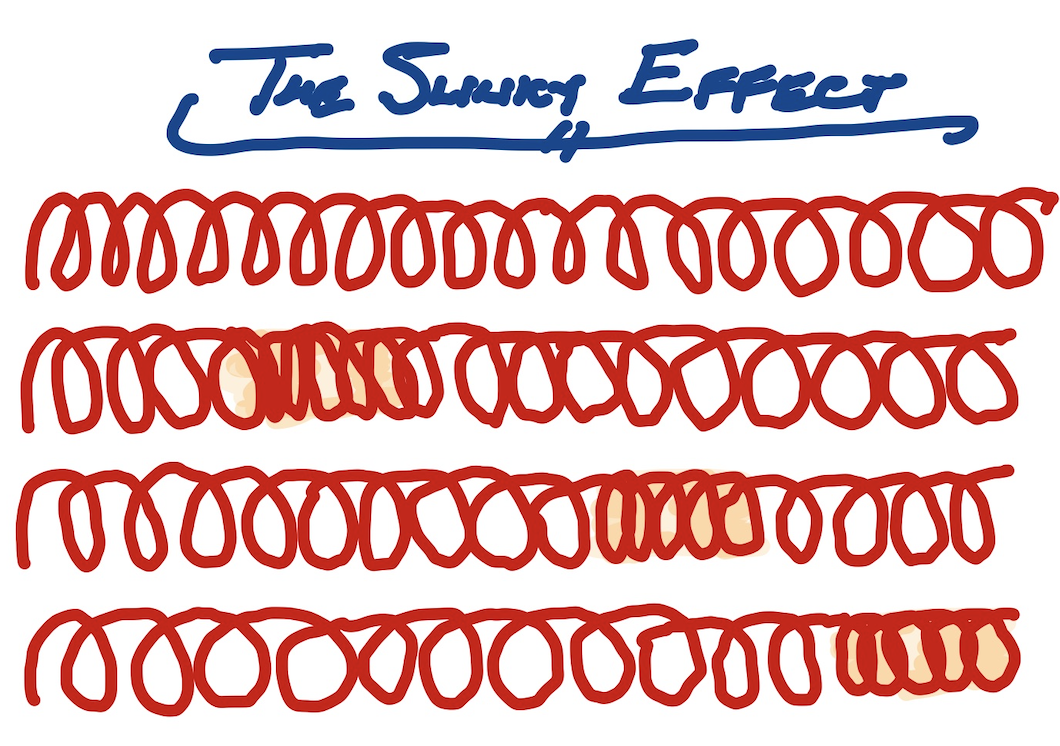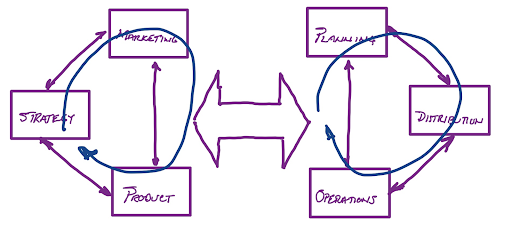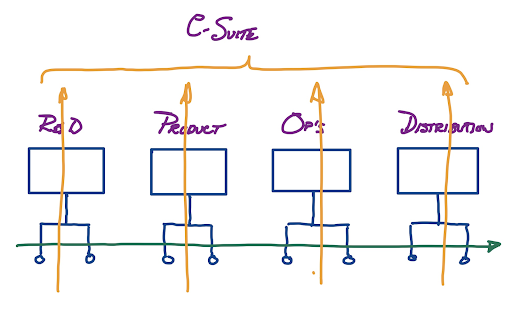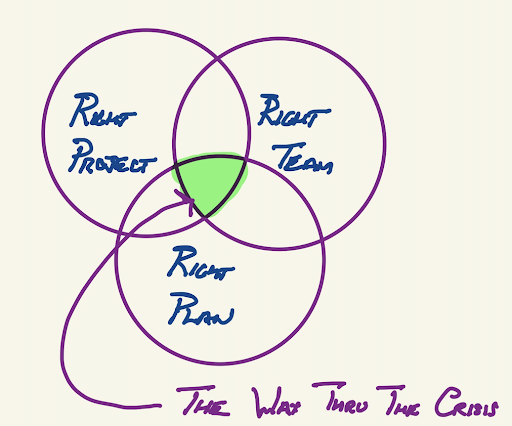
As I work with more teams on their post-COVID response, I’ve noticed that the repeatable patterns and powerful forces that serve us well during “normal” times are trying to sabotage our ability to respond to this crisis. We are in a unique time in business history where the processes and tools we have built are simply not responsive enough to help us find that path forward that we know is coming – a path that is obscured by a cloud of noise and distraction.
Specifically we need to look at our:
- Ability to create insight from data in the external environment
- Ability to connect it to our product and service development teams
- Deep cadences that threaten our ability to deliver value fast enough
- Cost management that can easily reduce our ability to create value
On the positive side, firms and clients have never been more open to adapting themselves.
External Environment: Dealing With Confusing Signals
To see these three processes clearly, we need to start outside your firm with something I like to call the “slinky effect.” This is a term I use that allows leaders to get a handle on just how unusual and noisy it is in our environment and markets.
For those of you who didn’t have the delightful experience of playing with the springy coil that is a slinky, let me just say you missed out. A slinky is an expandable spring that does delightful tricks like walking downstairs and is a great way to teach children about momentum. In our case though, it is a nice tool to talk about inertia and how hard it is to get a read on what’s happening outside our firms.
One of the more interesting things to do with a slinky is to stretch it out to about two meters and then give it a shake and watch a wave move through it.
Now, step back for a minute and think about what kind of shockwaves are currently going on outside your firm. Trillions of dollars of stimulus, check. Every human on the planet out of their normal routine, check. Global travel halted, check, and we could go on. When all these shocks travel through the system, we get all kinds of highs and lows, and depending on your vantage point, remarkably different opinions.
So, now for some applications. In my work with executives, I caution them to be very careful not to equate a short-term bump in sales as organic demand. Secondly, we need to be very careful of any single piece of “data” from our sales and marketing teams, because, with all this energy and inertia, it’s really hard to know a false signal from a real piece of insight. Traditionally we have built deep databases of behavior to be our filter, however right now, we need to move from using them to confirm behavior to discovering new behavior.
Last point – all that external change is moving way faster than your organization can respond. This is really important as we’ll unpack in a moment.
Internal Process Mechanics: Two Loops that Create All the Value in Your Firm
In the sketch above, I’ve depicted two major cycles of value creation in firms:
- The loop on the right is the traditional sales and operational planning loop, where client demand is fulfilled. This world is all about results on a daily and weekly basis, performing the hard work of creating and responding to client demand with existing products and services.
- The loop on the left is the product creation loop of strategy, market research, and product development. This loop creates fresh, new, and valuable products and services for the delivery loop on the right – and is connected to the delivery loop by very specialized processes.
These two loops run at the same time, but at very different cadences. The loop on the right frequently has daily, weekly and monthly targets. The product loop on the left commonly has quarterly and annual targets.
This all works great – except for now.
COVID is Neutering our Process’ Ability to Respond
Well technically the extraordinary changes wrought by the COVID crisis are killing and rendering ineffective our processes in two ways. Both come from the rate of change going on outside our firms that is (much, much) faster than the rate we are accustomed to responding in. I’ve had more than one senior client share with me that the op’s team views its products team as a distraction right now, and they’ve been asked to “sit tight,” while the ops team does its task and keeps the firm viable.
The first issue is that this breaks the linkage between the two loops and can only result in the stagnation of the products the firm produces. The second issue is that the loop speed on the product side is really, really stable (which during good times is a feature), but now holds back our ability to envision, explore, and create valuable new products and services.
Combined, these two issues of cadence and connection hold the firm back from doing the work of finding, forming, and delivering valuable products within the traditional product lifecycle.
Cost Management – Value Creation Tension
The third hurdle comes through deeply held management practices that come to the forefront during crisis management. One of the key tenants of crisis management is to lower the break-even point of the firm, and the biggest cost in most modern firms is people. Many firms are in the process of carefully going through their functional teams to see how they might use furloughs or perhaps reductions in force to lower the break-even point.
The insidious issue buried in this approach is that as a whole, firms manage these resources vertically. We have budget distribution and accountability vertically. We have performance review and organizational development focused vertically.
But the truth is that we develop customer value across the firm (the green line), or horizontally.
Usually, these lateral relationships develop organically and don’t require significant care and attention. During times of great change, however, when we are disturbing those relationships, we can lock up the firm’s ability to perform on behalf of the client. This one-two punch of emphasizing the silos, and removing people who have key relationships, takes a big toll on the firm’s ability to respond.
A Path Forward
The good news is that we do have a proven way to build around these tensions that are working hard to hold us back as we try to return our firms to vibrancy. The solution lies in building a temporary structure that allows the most efficient use of precious resources and is built to create accelerated results.
I use a specific tool called Right Project, Right Team, and Right Plan to build cross-functional efforts. Specifically, it all starts with a diagnostic process to define a breakout project. We use a small team to work through a synthesis process that yields a project so strong, we use the term it “wants to exist.” Once we have a project defined that we simply cannot do, we build the most effective team and plan from both loops. We use a Plan that makes use of the talent on a very expedited timeline with the goals of running a full order of magnitude faster than the base cadence of your product development loop.
This process has been specially designed to bridge the cadence gap, and build powerful cross-functional value quickly.
Let’s Talk
If you’d like to talk more about how this process works, it’s best if we have specific dialogue.
I take on a limited number of advisory and project clients, using facilitation tools, checklists, and processes honed through dozens of assignments. If you’d like to talk about how an advisory or consultative approach could help you through the muddled middle, please reach out to scott@scottpropp.com or put a 20-minute appointment on the books using this link.
Related posts you can benefit from…





